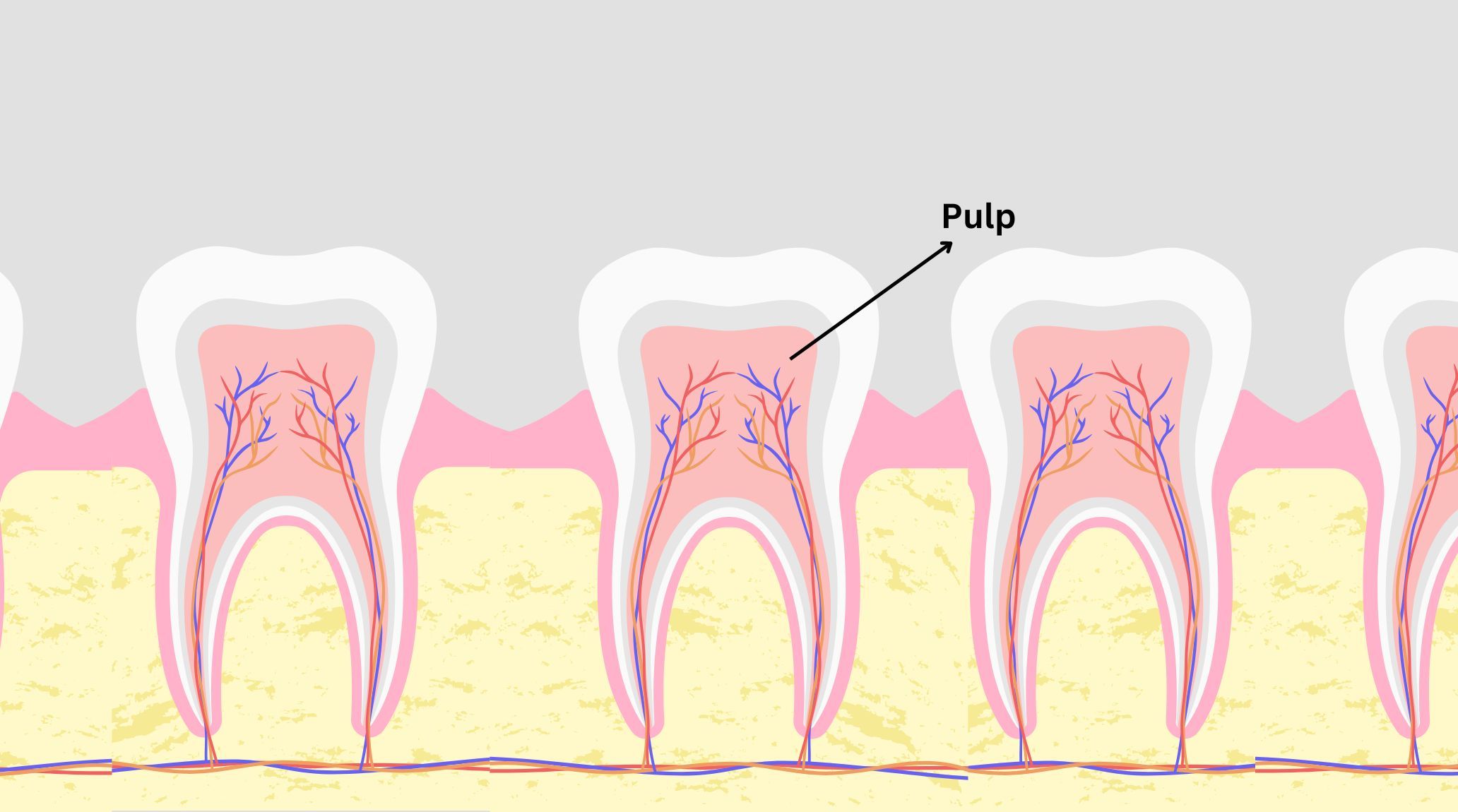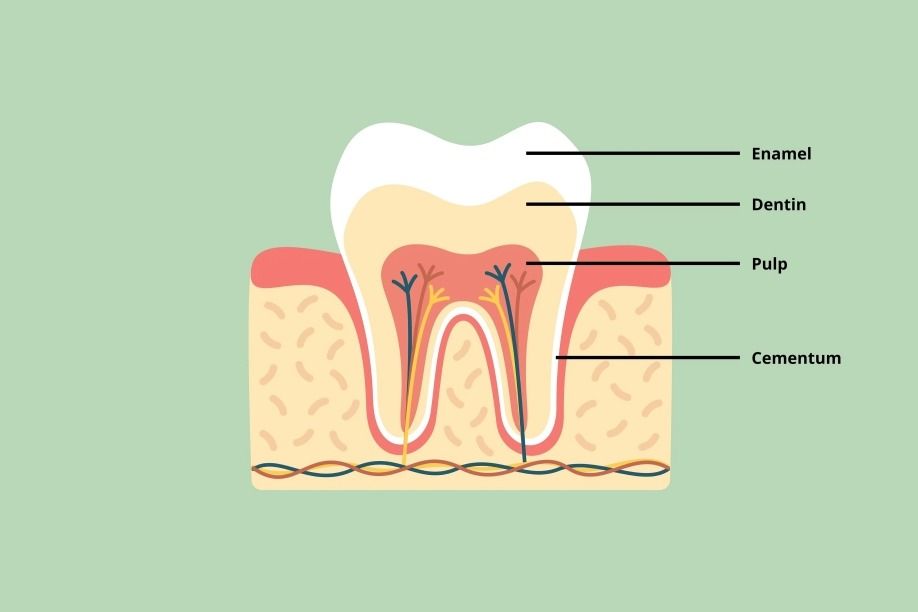
“
Tooth pulp is a vital component of each tooth, nestled within the inner chamber and responsible for its overall health and function. This soft tissue contains nerves, blood vessels, and connective tissue, which are crucial for the tooth’s vitality and sensitivity. These 20 facts delve into the intricate details of tooth pulp, revealing its essential role in maintaining tooth health and responding to various stimuli.1
1
”
The pulp is a connective tissue mass located at the center of the tooth, beneath the dentin layer. Together with dentin, it forms the “dentin-pulp” complex, also called the endodontium. These tissues are interdependent for their development and survival. 1
The pulp mass is a connective tissue located in the pulp chamber, rich in blood vessels and nerves. It contains various cell types, including fibroblasts, odontoblasts, histiocytes, macrophages, mast cells, and plasma cells. 2
The immune cells in your dental pulp detect and combat invading germs. Additionally, the nerves in the pulp sense temperature and pressure changes, alerting you to potential issues through discomfort. 3
The dental pulp is responsible for producing dentin, the middle layer of the tooth that supports the enamel, the hard outer layer. This dentin plays a crucial role in protecting the underlying tooth pulp and maintaining overall tooth integrity. 4
The tooth pulp produces proteins like albumin and fibrinogen, which are essential for keeping the dentin healthy. The blood vessels within the pulp also provide moisture, reducing brittleness and contributing to the tooth's strength and health. 5
Cavities, cracks, and other damage can expose the tooth pulp, making it susceptible to infection. Bacteria invade the exposed pulp, causing inflammation and pain. If untreated, the pulp can die and the infection may spread to other areas of the mouth and jaw. 6
Pulpitis is the inflammation of the tooth pulp caused when bacteria penetrate the dentin and enamel. It can result from tooth decay, injuries, or chronic grinding, leading to infection risk. 7
Pulpitis is inflammation of the tooth pulp due to bacterial invasion through the dentin and enamel. It can arise from tooth decay, injuries, or chronic grinding, increasing the risk of infection. The condition can be either reversible or irreversible. 8
To reduce the risk of pulpitis and pulp necrosis, maintain good dental hygiene by brushing twice daily for at least 2 minutes with a soft-bristled brush, covering all tooth surfaces. Use fluoride toothpaste, floss daily, and drink water regularly. 9
Advances in dental research are exploring methods for pulp regeneration. These techniques aim to restore damaged pulp tissue and enhance the overall health and functionality of the tooth. 10

As people age, the pulp may shrink and experience reduced blood flow. These changes can make the pulp more susceptible to damage and less responsive to treatment interventions.
Genetic factors can affect the structure and density of dental pulp, influencing susceptibility to dental diseases and the severity of pulp-related conditions. Variations in genes related to dental development and immune response may impact. 11
Chronic tooth grinding or bruxism can cause enamel and dentin wear, potentially exposing the pulp. This exposure increases the likelihood of pulpitis and other related issues.12
Physical trauma, like cracks or fractures, can expose the pulp to external bacteria. This exposure can lead to pulpitis or more severe complications if not promptly treated. In some cases, untreated trauma can result in pulp necrosis. 13
The pulp produces proteins such as albumin and fibrinogen that are essential for maintaining the health of the dentin. These proteins support the repair and protection of dental tissues. 14
Endodontic therapy, or root canal treatment, is used to address issues with the pulp. The procedure involves removing infected pulp, cleaning the root canals, and sealing them to restore tooth function. 15
ln carnivorous animals like lions, the tooth pulp is critical for sensory function, helping them detect prey. The pulp contains nerves and blood vessels that transmit sensations such as temperature and pressure. This sensitivity is crucial for effective hunting. 16
Elephants have large, complex molar teeth with extensive pulp chambers. Their teeth are adapted to grind tough plant material, and the pulp helps maintain tooth vitality as the teeth wear down and are replaced. 17
Primates, such as chimpanzees, have pulp cavities that support complex dental functions. The pulp aids in the sensory perception required for foraging and manipulating objects, reflecting their diverse diet and behavior. 18
Giraffes have long, flat molars with large pulp cavities that assist in processing their herbivorous diet. The extensive pulp chambers support the grinding of tough plant material and help manage the wear of their teeth. 19


